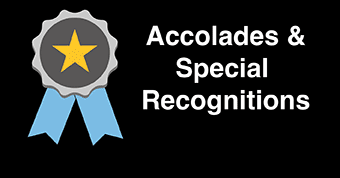Research Proposals: A Guide
The Basics:
A research proposal is a document written with the goal of describing a proposed research topic and convincing an audience that such a study is worth conducting—that is, that it would add to existing knowledge and understanding of the topic. The writer not only describes the project and its merits but also provides a broad overview of their proposed methodology, or how they plan to conduct their research. Depending on your field and the scope of your proposed project, this might involve simply detailing the sources you plan to consult, or it might also involve describing an experiment you could conduct, including notable variables, how data will be collected, if living participants will be involved, and how the research may be spread after the experiment. As always, you should consult your instructor’s assignment description, as your instructor might have additional expectations.
In most cases, research proposals are constructed for universities, research committees, or supervisors. When completed as part of a class, the audience may be the instructor, with the purpose of outlining the writer’s intentions for their research before starting it. Research proposals take a lot of detail and often require scrutiny upon completion since many proposals involve requesting time and money. Because of the stakes and subject matter, the tone of a research proposal should rely on factual information without providing direct opinion. Diction should be clear and concise.
Rhetorical Moves:
Rhetorical moves, or just moves, are particular strategies writers use to accomplish different goals in their writing. Some moves are obligatory, meaning that they must be made for a work to fit its genre; in other words, without these moves, the audience may fail to understand the purpose of the text or even recognize the text as fitting into its intended genre. Other moves are optional, meaning that a writer may choose whether to make them; in other words, while they might help a particular text achieve its purpose, omitting them won’t necessarily cause the text to fail. (For example, an obligatory move in assembling a shopping list is the naming of items needed, while an optional move may be the identification of a particular brand or maximum price.)
In a Research Proposal, the following moves are obligatory:
State clearly, towards the beginning, what purpose your project fulfills: Is it building on the research that’s come before? Is it addressing a gap in prior research? This statement of purpose will guide your proposal—and it will make an early contribution to your audience’s understanding of the value your project offers.
Especially for projects that would require commitments of time, money, or other resources, you must explain why your research is worth pursuing. Depending on your discipline, common justifications may include future societal benefits, monetary benefits, or breakthroughs in current knowledge within a field. Justifications usually appear early in any proposal to give the audience immediate reasons to support the proposal.
To demonstrate the merit of your proposed project—that is, how it contributes to the existing scholarly conversation—you need to help your audience see what has been done before. You need, therefore, to research your topic thoroughly and present a synthesized version of what your research uncovers.
In a Research Proposal, the following moves are obligatory:
It might be beneficial to discuss how relevant your research is to everyday life, a specific group of people, or a specific area. Often, researchers will incorporate this into the introduction or include it as a research justification. However, the contents of the study can impact how significant the scope of the problem is.
A hypothesis is an educated prediction based on known and expected information. Presenting a hypothesis gives some direction for how the researcher believes their experiment will unfold. Often, experimental proposals will incorporate a hypothesis, whereas literature-based ones will ignore it since they typically have no need to predict an outcome.
Many concepts are discussed in the Research Design section of a research proposal, but some factors depend on the context of a study. A few of the most significant outstanding discussion points include an experiment’s timeframe, limitations, and neutrality. Timeframe refers to an expected timeline of events for the study’s progression. Limitations refer to potential setbacks throughout the experiment, such as time constraints or errors. Neutrality addresses ethical concerns, especially for studies involving animals or specific groups of people.
If you intend to publicly share what is discovered in your experiment or literature findings, be sure to specify how exactly you want to disseminate the information. Typically, the explanation falls within the Analysis Procedure section of a research proposal.
A research proposal may end with a summary of the study, its significance, and the primary objectives within the proposal and procedure. Summarizing helps readers end with the most important takeaways in mind.
In some cases, you may be required to propose an experiment. In such cases, you’ll need to describe your experiment. This may include variables used, data collection methods, and how data will be processed or analyzed. Ideally, there should be enough detail to allow any researcher to mimic the experiment themselves, so any information that can influence the experiment should be mentioned. Often, this comes as part of the Research Design section of an experimental proposal.
Steps to take
Here are some steps you should take to write a research proposal:
-
Consult your instructor’s assignment description and earlier feedback if available.
Make sure you understand the particulars of your research proposal and your instructor’s expectations, including specific sections to include (if any) and which moves may be obligatory and which may be optional. If you have feedback from your instructor on earlier drafts or similar writing assignments, revisiting that feedback can help clarify expectations. If you have any questions, you should talk with a classmate and your instructor.
-
Pick a topic.
When brainstorming ideas on what you want to research, think about topics that fit the assignment and pique your interest. Make sure what you have in mind is feasible, novel, and useful.
-
Conduct initial research.
To create a good research proposal, you need to make sure your topic is something with value—that it contributes in some way to existing scholarly conversation. Take some time and do some research to see what scholars already know and don’t know about your topic. Make sure to take notes and keep track of the sources you consult.
-
Develop research questions.
Research questions outline the core goals of the writer and what they hope to discover through their work. They can be basic or complex, but answering them is typically the primary objective of the writer. They tend to be the basis of or inspiration for the entire proposal, after all. Your initial research will help you develop specific research questions: Can you identify any gaps in the existing research? Have researchers proposed further actions that haven’t been taken yet?
-
Plan your proposal idea.
After taking a look at other studies and writing some initial ideas, choose an idea from your list that piques your interest and you think should be explored further. Once you decide what it is you want to write your research proposal on, you then have to go on to write your proposal question or hypothesis. There are two ways you can go about doing this: [1] develop a specific question that research can help you answer; or [2] develop a research hypothesis to which you can conduct research to prove or disprove.
-
Plan your research aims.
Think about what you want to achieve from your research and write those ideas down—these are your aims. Your aims should be realistic, achievable, and practical. Accomplishing your aims should not rely solely on your expertise but should also have a history of prior interest or research done on the topic. Additionally, as you come up with your aims, you should make sure to explain things clearly so people who may not be experts on the subject are still able to understand your aims.
-
Plan out what you want to write.
To make the process of writing your proposal as efficient as possible, it is a good idea to create a plan of what it is you want to say. Gather all the information you need for each section ahead of time and write the main points you wish to discuss. Generally, a research proposal consists of a few common components. However, you should keep in mind that every proposal may vary depending on your specific situation and your professor’s requirements. The most common sections of research proposals are included in the next section.
-
Start drafting.
Now that you have all your pieces of information at hand, you can start drafting. Remember that this is your first draft and it doesn’t need to be perfect. Once you put all your pieces together, you can work on perfecting transitions and nitpicking at grammar and sentence structure.
Common Sections in Research Proposals
This is your reader’s first impression of your project, so you need to convey its interest and value. Express what you want to accomplish in your research and what resources you need to do it. Consider expressing your passion for the project or its perceived benefits, as that will help gain your audience’s support early on.
This is where you put forward all your supporting sources to the reader. This section is supposed to help the reader comprehend your argument in relation to what other researchers and sources have to say about it. Use paraphrasing to highlight the most important details related to your topic and avoid quoting sources too often. Keep in mind that a good research proposal will include sources that not only support its topic but also sources that show disagreement. (For more information on literature reviews, see the Writing Center’s guide to writing them.)
What is it you want to achieve through this research? That is the question you are answering here. You want to convey in detail the aim of your project. Keep in mind that your aim may also be your hypothesis. The objectives of your research are generally related to your working parameters in addition to the resources/tools that you would need to achieve your objective.
This section is your final pitch to the reader. You need to convince them that your research design will accomplish your aim. Additionally, you need to demonstrate that the methodology that you chose helps support your research. Keep in mind that not all research papers will contain the same components. To help you begin, here are some examples of components that can be included:
The elements/objects that meet the criteria to be included in your research. In other words, what are you testing on?
Includes things like the time frame required for the research and potential obstacles that the researcher may face while also providing ways to address them. If questionnaires are included in the research, those questions should also be included here.
Refers to methods taken to avoid bias in the research. Some examples of this are randomization, blinding, and anonymity.
Addresses the reliability of the research. Things like neutrality, consistency, and applicability are usually mentioned here.
Addresses the consistency of the results obtained from the research. Will the results obtained from the research be consistent if tested again on the same population/elements?
Addresses the ability to apply the results obtained from the research to diverse populations.
Break down the methods taken to sort the data obtained from the research.
As the creator of this research plan, you need to keep track of predicted costs for all aspects of your project. Additionally, you should plan an additional amount in case of unexpected issues or situations. In this section, you should not only break down the budget but you also need to justify each cost and its importance.
Appendices include the documents that you used throughout your research that helped support your objective. There aren’t specific documents for all research proposals since they vary depending on your research design. Some examples of documents included in this section are consent forms, questionnaires, and measurement tools.
This section is probably the most common in pieces of writing. Just like any other scholarly paper, you need to cite your sources properly. This section is also commonly known as the references and bibliography section.
How to work with a Writing Center tutor on a Research Proposal
No matter how you’re feeling about the assignment at hand, whether confident or not, you can benefit from consulting a Writing Center tutor. Please:
- Come early in the writing process. Don’t wait until you have a complete draft! In fact, you don’t even have to have written anything. Once you have a focus, main point, or plan of attack or outline for your Research Proposal, come talk it through with a tutor.
- Come back at different stages of the writing process. Again, come talk with a tutor well before you’ve finished drafting your Research Proposal. Try working with a tutor once you’ve written a couple paragraphs or sections. The tutor can help you identify moves that are working and how to keep them up, as well as those that aren’t working and how you can tweak them as you continue drafting.
This genre guide was written by
Hayden Seiberlich and Evita Vasquez
With guidance from
Edward Horan, Writing Center Coordinator; Dr. Heather Green, Assistant Professor of Health Sciences; and Dr. Nicole Milan-Tyner, Assistant Professor of Health Sciences
Works Consulted
Jansen, D. (June 2020). What is a research proposal? Grad Coach. https://gradcoach.com/what-is-a-research-proposal-dissertation-thesis/
Northeastern University. (n.d.) Research proposals. https://webguru.sites.northeastern.edu/research-proposals/
The Open University. (2008). Sample research proposals. https://fass.open.ac.uk/sites/fass.open.ac.uk/files/files/research/sample-research-proposal.pdf
Santelmann, L. (2001). Outline for research project proposal. Portland State University. https://web.pdx.edu/~dbls/proposals.html
Sudheesh, K., Duggappa, D.R., & Nethra, S.S. (September 2016). How to write a research proposal. Indian Journal of Anaesthesia, 60(9), 631-634. DOI: 10.4103/0019-5049.190617
University of Houston (n.d.). A sample research proposal with comments. https://www.uh.edu/~lsong5/documents/A%20sample%20proposal%20with%20comment.pdf


